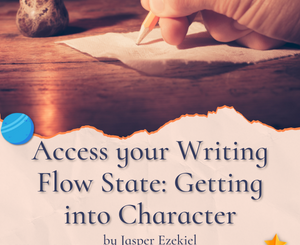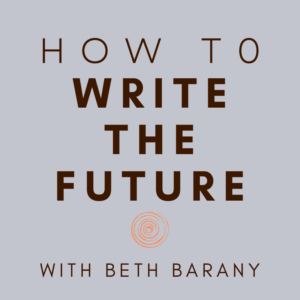Writing Snappy Dialogue
 Aspiring authors often ask me what is the best way to become better writers. I always say:
Aspiring authors often ask me what is the best way to become better writers. I always say:
Read.
Read.
Read.
And today’s guest columnist adds a very important component: Listen. Listen. Listen.
Listen in as Janice Seagraves shares about how to write snappy dialogue.
^*^
The best snappy dialogue that comes to my mind is from the movies of the 30’s and 40’s, think Kathryn Hepburn, and Cary Grant. These are the two actors who I think of as the King and Queen of snappy dialogue.
Cary Grant example:
Eva Marie Saint (Eve Kendall): I tipped the steward five dollars to seat you here if you should come in.
Cary Grant (Roger Thornhill): Is that a proposition?
Eva Marie Saint (Eve): I never discuss love on an empty stomach.
Cary Grant (Roger): You’ve already eaten!
Eva Marie Saint (Eve): But you haven’t.
~*~
Snappy dialogue isn’t clunky, it flows. There a teasing quality to it and you can’t help a grin when it goes just right.
Kathryn Hepburn’s example:
Howard Hughes: [doesn’t hear what Kate says] Excuse me?
Katharine Hepburn: Well, if you’re deaf, you must own up to it. Get a hearing aid, or see my father. He’s an urologist, but it’s all tied up inside the body, don’t you find?
Howard Hughes: Mmm.
Katharine Hepburn: Me, I keep healthy. I take 7 showers a day to keep clean, also because I’m so vulgarly referred to as “outdoors-y.” Well, I’m not “outdoors-y,” I’m athletic. I sweat! There it is, now we both know the sordid truth: I sweat, and you’re deaf. Aren’t we a fine pair of misfits?
~*~
I think some of my best scenes in my book, Windswept Shores, where the dialogue just flows are the ones where the hero teases the heroine.
Windswept Shores’ example:
“If I had me a net, I could catch some of those fishies for dinner.” Seth paddled water while he gazed into the pool.
“Don’t you have a net on the boat?”
“We usually use fishing poles.”
“No, I mean to net the fish after you reel them in.” She swam over to him.
“I don’t reckon you know the difference between fresh and salt water fishing, mate.”
“Okay, what’s the difference?” She splashed water just in front of him.
His smile twisted to the side. “When you fish in the sea, they’re a mite bigger.”
“Okay, smarty pants, how do you get the fish into the boat?”
“You use a big stick with a hook to pull them in.”
“Oh, I think I did see that somewhere.”
“Probably, you accidentally lit on it when ya flipped through the channels on the box.”
~*~
The best way to learn snappy dialogue is to listen to it. Watch those wonderful films of the 30’s and 40’s, or anything that has snappy banter. If you’re lucky enough to know people who pick and tease in the same manner, then listen to their conversations. And it might just make you smile.
It’s all in the ear. And it can be learned.
Windswept Shores’ example (it’s not all one sided, Megan gets her turn):
Walking back to the Dinki-Di, Seth complained with a glance at her bikini, “Why did you put your cossie back on?”
“I’m not comfortable naked,” she explained. “What if someone showed up while I’m undressed?”He gazed around, then back down at her. “Megz, no one is here.”
“No, but you showed up not once, but twice, didn’t you?”
“Um, yeah,” Seth muttered with a slight frown.
“Can’t argue with that, can you?” She grinned. I love winning an argument.
Janice Seagraves bio: When not writing late into the night, Janice takes care of her hubby of thirty-one years and a just grown daughter. They are owned by an overly affectionate cat and two birds. One a handicapped dove and the other a pigeon who is in love with her husband (not kidding).
You can find Janice’s book, Windswept Shores, at Pink Petal Books.
Windswept Shores’ book trailer
Janice Seagraves’s website: http://janiceseagraves.org/
Her main blog: http://ladyjanice.blogspot.com/
Facebook page: http://www.facebook.com/janice.seagraves
And twitter: http://twitter.com/janiceseagraves
How do you pick up good dialogue for your stories? I love eavesdropping in cafes.







Hi Beth,
Thank you for posting my article. I had fun writing it. 🙂
Janice~
Janice,
I love to add humor and snappiness in my books. Thank you for posting here today and sharing a few tips. I truly enjoyed your examples. Plus, I love witty heroines who have great comeback lines.
I’m glad you did. Thanks! I love watching old movies for their sexy and smart dialogue. Recently, I enjoyed watching a little known Fred Astaire film, Flying down to Rio, (http://www.imdb.com/title/tt0024025/), for that very reason. This is the first film pairing Fred Astaire and Ginger Rogers, btw. 🙂
[…] article How to Write Snappy Dialog, written by yours […]
I love snappy repartee; guess that’s why I love those old ’30s movies so, and the novels of TJ Glenn. He writes like those movies sound. Smart dialogue and plenty of give and take between hero and heroine and hero and villain. Great blog, Janice!
Snappy dialogue goes a long way in holding a reader’s interest. Thanks for sharing your insight, Janice. 🙂 I enjoyed.
I had a wonderful teacher, James Frey (author of How to Write a Damn Good Thriller and other How to books) who said the best dialog is indirect dialog. This is the sort of witty exchange you get in Hepburn/Tracy or Bergman/Bogart. Or you’ll see it when the hero is in a bad place — being beat up or threatened. Instead of responding to the threat he comes back with snappy remarks and keeps doing so no matter how badly he is hurt. These are the characters we root for.
Dialog also needs to have conflict/tension in it. It can’t just be empty words. It has to move the story forward and reveal things about the characters. It’s not easy. I think one way of learning is to write scripts. Those are stories told entirely in dialog. If it falls flat, the story dies.
Pat, Great tip on writing scripts. Thanks! I find that my novel first drafts are mostly just dialog.
That’s how the story rolls through me.
I am very spare with my dialog most of the time. But what I do write, is often times people’s mutterings to themselves, or the half-truths they tell others. That leaves plenty of room for additional dialog, should it be needed!
Now, I read some books where the dialog goes on for pages and pages and pages with very little in the way of emotional markers or gestures, or things to tell us what the person is thinking/doing at the same time. I sometimes find that dry, but maybe that’s just me – like at the end of the mystery movie where it’s just the hero and villain, and he’s just waxing poetic about his wonderful evil plan, and you as the viewer know that’s the only way the script writer could get that information out there. But unfortunately, it often sounds like a long monologue.
Kinda like my comment is becoming! LOL
Thanks Yvette! Meandering dialog can be a weak point in a book. As readers we need emotional markers and physical setting to make the story seem room.
Snappy dialog is largely how we show the interaction between our characters. Without it, the scenes seem flat. Thanks for the great examples!
Marsha, Thanks for your comment. I agree that snappy dialog is largely how we show the interaction between our characters. I also like to add physicality to show subtext in the words.
Hi Ginger: Me too. 🙂 And its fun to listen to and read.
Hi Beth: Hmm, I don’t know if I’ve ever seen that one. I’ll have to look it up. Thank you for the info.
Hi Toni: Thank you very much.
Hi Lisa: Yes they do. Thank you very much. 🙂
Hi Pat: Thank you for your insight.
Hi Beth: Its true you can have a novel that is all dialog. Nothing wrong with that.
Hi Yvette: Thank you for you insight. I feel that same way about when the character is thinking too much and doing nearly nothing.
Hi Beth: Yup, balance is key to a well constructed book.
Hi Marsha: Thank you very much.
And thank you again, Beth. 🙂
Janice~
I agree, snappy dialog can bring life to a dull story. I hate dull dialog. I have a tendency to think out of the box. I have friends who use plenty of colorful language. They slay me, and I take mental notes. Great job Janice.
Immensely helpful articles! Thanks.
You’re so welcome, Mary!